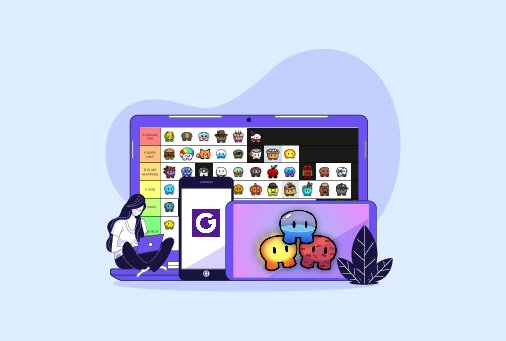In the evolving landscape of education, interactive learning tools have become essential in fostering student engagement, participation, and deeper understanding. Among these tools, Gimkit has emerged as a powerful platform that redefines classroom interactivity. Developed by a high school student, Gimkit blends the appeal of game-based learning with educational objectives to create a truly immersive experience. At the heart of this platform is the Gimkit Host—a feature that empowers educators to lead interactive sessions, monitor student progress, and create a dynamic learning environment.
This article delves into the transformative power of Gimkit Host, examining its features, pedagogical benefits, use cases, and the broader implications for digital education.
The Genesis of Gimkit
Gimkit was founded by Josh Feinsilber as a high school project. Recognizing the lack of engaging review tools in traditional classroom settings, Feinsilber sought to create a platform that combines entertainment with education. The result was Gimkit—a quiz-based platform where students earn virtual currency for correct answers and can invest it to gain in-game advantages.
Over time, Gimkit has evolved into a comprehensive educational tool used by thousands of educators worldwide. The platform supports multiple game modes, real-time analytics, and a growing suite of features that allow for extensive customization.
What is a Gimkit Host?
The Gimkit Host is essentially the educator or facilitator of a Gimkit session. While students engage with quizzes and games on their devices, the host orchestrates the experience. They choose the game mode, set rules, monitor performance, and provide feedback. Hosting is not just about starting a game; it’s about shaping the learning journey.
Key responsibilities of a Gimkit Host include:
- Selecting or creating question sets.
- Choosing appropriate game modes (e.g., Classic, Team Mode, Trust No One).
- Controlling the session flow.
- Tracking real-time performance data.
- Encouraging participation and motivation.
The host interface is user-friendly, offering comprehensive controls and insights to enhance the learning experience.
Features of Gimkit Host
1. Game Mode Selection
Gimkit offers a variety of game modes, each catering to different learning objectives. From competitive individual games to collaborative team efforts, hosts can choose modes that best suit their classroom dynamics.
2. Customizable Question Sets
Hosts can either create their own question sets or import from existing ones. Questions can be aligned with curriculum standards, ensuring that gameplay remains educational.
3. Live Progress Monitoring
The host dashboard provides real-time analytics on student responses, accuracy, and engagement. This enables immediate intervention and support.
4. Incentivized Learning
Students earn in-game currency for correct answers, which they can use to purchase upgrades. This gamification element keeps students motivated and engaged.
5. Integration with LMS
Gimkit supports integration with popular learning management systems, making it easy for hosts to manage classes and track long-term performance.
6. Homework Mode
Beyond live hosting, teachers can assign Gimkit sessions as homework. Students can complete these at their own pace, and hosts can review their performance asynchronously.
Pedagogical Impact of Gimkit Hosting
1. Enhanced Engagement
Traditional lectures often struggle to hold student attention. Gimkit transforms passive learning into an active experience, capturing students’ interest through competition and strategy.
2. Immediate Feedback
With real-time data, hosts can provide instant feedback, address misconceptions, and adjust teaching strategies on the fly.
3. Differentiated Instruction
Gimkit allows for varied question difficulties and customizable pacing, enabling teachers to cater to diverse learning needs within the same classroom.
4. Collaboration and Communication
Certain game modes require teamwork and discussion, fostering important soft skills alongside academic learning.
5. Data-Driven Instruction
Hosts can analyze performance trends over time to identify strengths and areas for improvement, allowing for more targeted instruction.
Use Cases in Different Educational Settings
1. K-12 Classrooms
Gimkit is widely used in elementary, middle, and high schools for subject reviews, test preparation, and concept reinforcement.
2. Higher Education
In colleges and universities, Gimkit serves as an engaging tool for introductory courses, especially in large lecture settings.
3. Remote Learning
During the COVID-19 pandemic, Gimkit proved its versatility by supporting remote and hybrid learning models.
4. Professional Development
Educators and corporate trainers use Gimkit to make workshops and training sessions more interactive.
5. Special Education
Gimkit’s customizable features support inclusive education, allowing hosts to tailor sessions for students with special needs.
Challenges and Considerations
1. Access to Technology
Not all students have equal access to devices and reliable internet, which can limit the effectiveness of Gimkit.
2. Content Quality
The educational value of a Gimkit session largely depends on the quality of the question sets. Poorly designed content can undermine learning.
3. Distraction Risk
While gamification boosts engagement, it can also lead to off-task behavior if not properly managed by the host.
4. Privacy Concerns
As with any digital tool, data privacy and student information protection are important considerations.
Future of Interactive Learning with Gimkit Host
The success of Gimkit Host reflects a broader shift in education towards interactivity, student agency, and data-informed teaching. With advances in AI and adaptive learning, future versions of Gimkit could offer even more personalized experiences.
Predicted advancements may include:
- AI-generated quizzes based on individual learning gaps.
- Integration with VR for immersive simulations.
- Expanded analytics for predictive assessment.
As education continues to embrace technology, platforms like Gimkit will play a crucial role in shaping the classrooms of tomorrow.

Conclusion
Gimkit Host represents a powerful convergence of technology and pedagogy. By placing educators in the driver’s seat of a dynamic, interactive learning platform, it transforms traditional instruction into an engaging, student-centered experience. Whether used in a classroom, remotely, or in professional development, the impact of Gimkit Host is undeniable. As digital education evolves, tools like Gimkit will be instrumental in equipping learners and teachers for the challenges of the 21st century.

